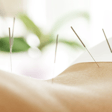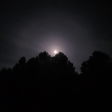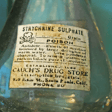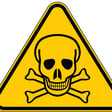Become a Creator today!Start creating today - Share your story with the world!
Start for free
00:00:00
00:00:01

The Sound of Healing
It has been FAR too long since my last episode, but with the holiday seasons upon us, life has become particularly busy.
However, past that, in this episode I talk about sound healing, or more broadly, how vibrational therapy is used to help us... whether it is conventional medicine such as sonograms for pregnant women or lithotripsy for kidney stones, or more esoteric vibrational therapy such as using singing bowls or drumming.
Also, after I posted this episode, I found a great link for chanting the word "OM". Here it is:
https://www.discovermagazine.com/health/can-chanting-om-reduce-stress-and-anxiety
It's only an introduction to the topic, but I hope you find it interesting. Let me know, with a message, by sending an email to me at anthony@spectrum-holistic.com
Thanks!
However, past that, in this episode I talk about sound healing, or more broadly, how vibrational therapy is used to help us... whether it is conventional medicine such as sonograms for pregnant women or lithotripsy for kidney stones, or more esoteric vibrational therapy such as using singing bowls or drumming.
Also, after I posted this episode, I found a great link for chanting the word "OM". Here it is:
https://www.discovermagazine.com/health/can-chanting-om-reduce-stress-and-anxiety
It's only an introduction to the topic, but I hope you find it interesting. Let me know, with a message, by sending an email to me at anthony@spectrum-holistic.com
Thanks!
Transcript
Introduction and Health Resources in Georgia
00:00:00
Speaker
Are you one of the 1.5 million Georgians without health insurance? Visit GeorgiaAccess.gov to connect with the resources to find affordable private and public health care options. You may be eligible for financial assistance programs, including Medicaid and peach care for kids. Even healthy people need coverage. An unexpected medical emergency can hurt you and your wallet. Open enrollment for health insurance plans ends January 15th, so don't wait. Visit GeorgiaAccess.gov today.
Holistic Health and Alternative Therapies Introduction
00:00:32
Speaker
Hello and welcome to the Full Spectrum Holistic Health Podcast. This podcast is all about holistic health, what it is, various holistic and alternative health therapies, and how those may help you to be a healthier and happier person. Thanks for choosing to listen today. I know there are many podcasts out there for you to choose from, and I'm glad you are here. I'm the host for the podcast, Dr. Anthony Burton. I'm a Reiki Master EFT therapist
00:01:01
Speaker
meditation teacher, and a shamanic practitioner. My goal is to help people be healthier in body, mind, and spirit, and that's why I'm here. A large part of what I do is educational in nature because so many people are unaware of the power and efficacy of various holistic and alternative therapies. In these podcasts, we'll hear stuff that will inform you, enlighten you, and help energize and balance you.
00:01:29
Speaker
Of course, it won't always be only my opinions and ideas because occasionally I will be interviewing knowledgeable and interesting guests from a variety of areas of holistic and complementary health practices. So kick back and relax, open your mind, and listen. Spectrum Holistic is a complementary health and wellness business located in northwest Georgia, USA.
00:01:53
Speaker
Check out the website at www.spectrum-holistic.com for more information.
Sound in Spiritual and Healing Practices
00:02:06
Speaker
According to Judeo-Christian and Islamic scriptures, God spoke the universe into being. Let there be light.
00:02:16
Speaker
In Hindu and Buddhist belief systems, the word alm is the primordial sound of the universe, the sound of creation. And this is why Buddhist monks and other meditators often chant the word alm
00:02:33
Speaker
Sound has been important to both worshipers and healers for many thousands of years. Shamans and other indigenous healers have used drums and rattles and whistles and chanting since, well, for millennia as a part of healing and inducing translate states in themselves or in their patients.
00:02:55
Speaker
The ancient Egyptians even considered the vowels in their language to be sacred and would chant them as a part of healing rituals. And of course, like I said before, Buddhist monks and meditators will chant sometimes the Aum and sometimes mantras as a part of focusing themselves on the divine universe. Now here is a short recording of monks chanting Aum.
00:03:50
Speaker
I'm not going to do that.
00:04:20
Speaker
You are the one who is the one who is the one.
00:04:26
Speaker
Interesting, isn't it? In the Christian faith, some monks also chant as a form of worship and focusing on God, like Gregorian chants. Now this podcast is not about religion per se, but rather as a way of bringing attention to the idea of the importance of sound as a way of centering ourselves, but even more importantly, as a way of healing ourselves and others.
Practical Applications of Sound in Healing
00:04:58
Speaker
Now I use sound as a healing technique with my clients and the types of sound vary depending on the situation. I have tuning forks in a variety of frequencies, which I use in healing sessions with individuals. And most of the time I use these forks in combination with Reiki, as I believe the synergy of these two techniques can often be a really, really effective and powerful healing method.
00:05:26
Speaker
If I'm performing shamanic work for people, I use drums, or rattles, or both, as the situation may require. Now here is a recording of shamanic drumming for Journey. In other words, journeying drumming. And by the way, this is me drumming on a shamanic drum. It's about 16 inches in diameter.
00:05:52
Speaker
Sometimes we combine rattling and drumming, but most of the time it's just drumming for me or just rattling. It's really difficult to do both at the same time if you're just one person there. Okay. So here's the recording.
00:06:25
Speaker
I also use singing bowls, either with an individual in a therapeutic setting, again, along with using Reiki at the same time, or with a group, as in a sound bath. Not long ago, I had the pleasure of conducting two short sound bath sessions at the opening of some friends' new business, Rosie Solutions in Chickamauga, Georgia. Brandy Rose Wilson and Carla Mondragon.
00:06:52
Speaker
are the owners and they very kindly allowed me to be a part of their grand opening day on October 30th of this past month. Each of the short sound bass sessions was about 15 minutes in length and involved singing bowls, a gong, recorded shamanic drumming played softly in the background, and we have two hands so I had to record the drumming earlier and played it recording through a speaker as I was also playing the gong at the singing bowls.
00:07:21
Speaker
Sounds are powerful, whether they use them for worship purposes, for healing, for soothing, or even theater. There's this famous and usually misquoted line from a 17th century play by Congreve. And it says, music has charms to soothe a savage breast. And people often say beast instead of breast for some reason, maybe because they're embarrassed by using the word breast or whatever.
00:07:51
Speaker
Both science and daily experience for thousands of years have shown this to be true. And as well as its opposite, that some music can rouse passions and cause strong emotional reactions. But the point is sound and music have power to influence the mind and the emotions and thereby the body.
00:08:17
Speaker
You ever watch a scary movie like Stephen King's It or The Shining or Paranormal Activity? Well, the directors of all three of these movies use what is called infrasound.
Medical and Cultural Sound Therapy Applications
00:08:33
Speaker
Those are sounds that lie near or below the frequency that most humans can consciously hear. Now, you can hear them, but you don't realize you hear them.
00:08:42
Speaker
And these sounds induce feelings of anxiety and fear, or they can, in those watching their movies. And boy, they work. As long as you are watching the movie in a theater or another situation where the sound system is up to handling it. Now, if you're just watching it on your iPad or your phone, no, it's not going to do that because the speakers in your iPad or phone
00:09:07
Speaker
are not capable of reproducing the depth of the sound that's coming from the infrasound. The other end of the emotional spectrum could be shown by stirring Marshall music. Uh, so does that written by John Philip Sousa? And even without words, the beat of the drum and the blare of the trumpets are rousing and they can inspire feeling or confidence. Yeah, I think that's probably why for centuries,
00:09:35
Speaker
Armies going to war have used drums and bugles and trumpets and pipes and anything else they can find to rouse the feelings and just to strengthen the emotions of the people who are going out to fight. Of course, the other side of that may be if you felt the calming or inspirational sounds of church music, maybe a piece by classical composer played on a massive pipe organ or the rousing beat of gospel music.
00:10:07
Speaker
And even if you're not particularly religious, perhaps you've experienced soothing lullaby music. You know, the kind that makes children and adults alike relax and feel more like nodding off to sleep. For that matter, have you ever seen a demonstration of how a highly trained singer is able to shatter a wine glass with a sound produced by their vocal cords?
00:10:33
Speaker
Now sound is also a large part of modern medicine, although many people do not even think about that. Those of you who may have suffered with a kidney stone,
00:10:44
Speaker
Might have experienced a relief provided by lithotripsy. Lithotripsy is the use of focused sound waves to break up kidney stones into smaller and smaller pieces so they can pass more easily. It's never fun to pass a kidney stone, no matter how small it is, but at least by using lithotripsy, they can break up the large ones into gritty, almost sand and pass that out.
00:11:09
Speaker
If you're one of those people who's ever been pregnant, maybe you've seen an image of your unborn baby displayed on a screen shown by a sonogram, which is a sound picture of the, uh, the unborn child within the mother. So the sound waves through the abdomen, like the way sonar does when a ship is looking for things underwater. Since that sound waves through the abdomen, it bounces back and it gives you a image on a screen.
00:11:39
Speaker
Now ultrasound has also been used not only to look at things like an unborn child, but it's also been used to treat medical issues. Properly applied, ultrasound has been found to induce tissue relaxation, increase localized blood flow, breakdown scar tissue, and that was a surprise to me. I hadn't known about that until I read recently about it. Increasing localized blood flow can help ease inflammation and swelling.
00:12:09
Speaker
reduce pain and in some cases even speed the healing of broken bones. Ultrasan can also be used to enhance the absorption of pain- relieving analgesics and anti-inflammatory agents by aiding them to pass through skin and other soft tissue. Back since the mid-1990s,
00:12:31
Speaker
ultrasound was found to be effective as a non-invasive surgical technique. Left physicians target and destroy unwanted growths by heating them. Now, how do you think? What is this, heating them with ultrasound? Well, by vibrating them at a particular frequency of sound, it can cause heat to be generated within the growth and it destroys the growth. One real advantage of such treatment is that there's no apparent ongoing negative effect.
00:12:59
Speaker
such as might be seen from something like radiation treatment. But I'd like to talk about the less mainstream ways of healing that use sound. In the 1970s, scientists at the National Center for Scientific Research in Paris, I don't know the French term for that, studied the effects of sound on normal and malignant cancer cells.
00:13:25
Speaker
and their results were pretty surprising. They used things like flutes and drums and gongs and other musical instruments and discovered that at a sound level of around 35 decibels, these sounds produced changes in the cells, disrupting their structural integrity. And a 2010 study in Finland found that stroke patients who were given access to music as cognitive therapy
00:13:53
Speaker
things that helped them to think properly, had improved recovery. Other forms of sound therapy include using Tibetan singing bowls, crystal bowls, chimes, tuning forks, chanting, and toning, which is just going, ah, or some tone like that, and even gongs.
00:14:18
Speaker
According to one study that was related to using the singing bowls, quote, 62 women and men with an average age of 50 reported significantly less tension, anger, fatigue, and depressed mood after sound sessions. Tibetan singing bowl meditation may be a feasible, low cost, low tech intervention, but reducing feelings of tension, anxiety, and depression and increasing spiritual wellbeing.
00:14:46
Speaker
And I might say this also, it is non-pharmaceutical, so it's not something that's going to mess up your brain, or you won't become physically addicted to it. Although in this study the researchers referred directly to changes in mood, emotions, and mental state,
00:15:06
Speaker
Scientists and doctors know that the more relaxed a patient is, the easier it is for the patient's body to heal itself, which results in quicker and more complete recovery. When a human being is relaxed, their heart rate studies, their respiration becomes deep and slow, and this decreases the production of stress hormones.
00:15:30
Speaker
The late Dr. Mitchell Gaynor was an oncologist and a clinical assistant professor of medicine at Weill Medical College of Cornell University, and he was also the author of The Healing Power Sound. He and other scientists hold that the reduction of stress hormones is really significant because stress has a negative and depressive effect on the immune system
00:15:52
Speaker
And reducing these stress hormones in this way can help our bodies fight illness such as flu viruses and even cancer for eons, centuries, whatever you want to call it.
00:16:06
Speaker
Thousands of years, shamans and other indigenous healers have used sound, whether it was drums or rattles or whistles or didgeridoos or chanting, to aid in the healing of those who were sick or injured. But modern science often passes off as simple superstition, just some crazy witch doctor, you know? Recent research, however, has also shown that sound does indeed have power to influence our physical bodies.
00:16:36
Speaker
It's a recognized field of medical therapy now called sound therapy or vibrational therapy. I love it when modern medical science adopts and sometimes adapts healing techniques that are millennia old. Of course, it's really funny when some of these researchers and scientists and doctors say, oh, we've discovered a new way to help people, a new form of therapy. Well, it's not really new. Let's talk about some things that we complementary therapists and
00:17:06
Speaker
energy healers and light workers have known for quite some time. Okay, full warning. This is where it begins to get sort of woo woo. If you can't handle that, if you're free to shake your head and say, okay, this is all a bunch of crap and turn off the podcast. You're not going to hurt my feelings. But if you listen with an open mind, you might catch something that surprises you or makes you think, well, hmm, maybe there's something to some of this stuff.
00:17:37
Speaker
As I mentioned, shamans and other healers have long used sound as a part of their healing methods. As a holistic health practitioner, I also use sound in various ways as a part of my healing practice. At some point I may say my healing practice or call myself
Shamanic Practices and Sound's Spiritual Power
00:17:58
Speaker
an energy healer, but I want to emphasize here now that I don't heal anyone, I don't heal anybody.
00:18:03
Speaker
I help people to heal themselves in cooperation with nature, and that's it. I do not heal people. And while I'm about it, let me address the term shaman.
00:18:16
Speaker
While the word shaman originally was a word for a specific indigenous healer among the Sami and Tungus people, ethnologists and other anthropologists and so forth have generalized that term to mean any person of any culture who is recognized by his or her local community and uses certain general practices that are common to most, if not all, indigenous cultures.
00:18:43
Speaker
So if I use the word shaman or shamanic, I am not misappropriating a word. I am using it in a way that is generally recognized to mean spiritual healing modalities that share certain commonalities in practice across indigenous cultures. And further than that, I don't call myself a shaman. I was not selected nor recognized by my community as a healer.
00:19:10
Speaker
but I am a shamanic practitioner, which means I've been trained and initiated in shamanic practices and make use of those practices to help others heal. Sometimes someone will call me a shaman, and if it's a situation where I can correct them without publicly embarrassing them, I'll do that. Otherwise, I usually just let it slide as long as there was no malicious intent. In this podcast, I may use the terms interchangeably.
00:19:38
Speaker
Because it's just easier to say shaman. Okay, let's talk about drums and rattles first. Drums have been part of healing practices for centuries, millennia. Shamans and shamanic practitioners use both drums and rattles in their healing ceremonies, along with other sounds, such as whistling or chanting. For shaman, the drum or the rattle
00:20:02
Speaker
serves the purpose of helping get them into the mindset necessary to travel to the spiritual realm or to get help for their client slash patient. The beating of the drum or the sound of the rattle invokes what scientists call a frequency following response. Some people might refer to this as sound entrainment so that the shaman's brainwaves will begin to synchronize with the sound.
00:20:30
Speaker
This helps the shaman to go to a mental and spiritual state where they more easily enter that state of what Michael Harner, who is an anthropologist, teacher, or shamanism and author, calls non-ordinary reality. After the shaman enters this state of non-ordinary reality, he or she seeks out answers to whatever issue is bothering the client.
00:20:56
Speaker
Now, honestly, this podcast is not intended to go deeply into shamanism. That will be something we'll talk about in a future episode. In fact, I really like to interview a shamanic practitioner that I know over in Ireland, but we'll see how that works out because of the distance and everything. But we're going to talk about shamanic practice and how it uses sound as a component of healing. But let me take it just a little farther.
00:21:25
Speaker
I have been a participant in what are called healing drum circles, where everyone in the group or almost everyone had either a drum or a rattle. In the center of the circle was where a healer was working to help heal someone from the circle. The drumming and rattling of all the participants circled around the circle helped in a couple of ways. First of all, with everyone keeping the same rhythm,
00:21:50
Speaker
It helps to focus the intentions of all members of the group on the matter at hand. In other words, helping the one who is seeking healing. In such healing sessions, having everyone there present with a focused intention is really, really helpful to the healing process. It is that same sort of frequency following response. Secondly, the person who was the focus of the ceremony
00:22:18
Speaker
is drawn into the same rhythm by being surrounded by it. And this helped that person, him or her, to open up to the healing energy. Now, remember I warned you about the whole woo woo thing.
Vibrational Nature of the Universe and Sound Healing
00:22:33
Speaker
Well, intention has been shown in experiments to be able to change physical reality and help individuals to heal. This includes the intention of a single person, perhaps the one who is sick,
00:22:48
Speaker
but even more so when a group of people have focused intention. Now, I personally believe this is true, because I've seen it. I have experienced it. But I also found a number of medical and scientific research projects listed at the National Institutes of Health. One of the more accessible sources of information is a book called The Energy Healing Experiments by Gary Schwartz, PhD.
00:23:14
Speaker
If you haven't seen it before, maybe it's at your library, you might be able to find a copy of it on Amazon. I recommend you take a look at that book. Check it out of the library or bar from someone if you need to. If you are interested in quantitative evidence about energy medicine and how it helps people. Now, everything in the universe is composed of vibration. Your body, my body, a rock you might find in your yard, the water in the ocean, all of it is vibration.
00:23:43
Speaker
We might think we're solid, but when we closely examine anything that's made of matter down to a sub-microscopic level, everything there is energy that vibrates and sound is vibration. The idea that sound vibration can affect changes in the physical and energetic components of our bodies is not so radical really.
00:24:11
Speaker
It doesn't require belief in magic or in shamanism or voodoo or religion to understand how sound can have a healing effect on our bodies. I hope you found this podcast interesting and informative. And I'd really like to hear from you if you've had any experience with sound being used to help you heal, whether it was a
Podcast Wrap-up and Listener Engagement
00:24:38
Speaker
healing circle with drums or if it was lithotripsy or if it was any kind of use of sound to help your body heal itself. I'd love to hear about it. So leave a message for me. I'd appreciate that. Thank you for your time. Take care. Namaste. Thanks for being here and listening to the podcast today.
00:25:09
Speaker
I trust it has been interesting, informative, and thought provoking. If you did find it interesting, please be sure and return for another episode and tell your friends about it too. I'd love it if you did that. It really helps me out. You can share directly from most podcast platforms. It would be really great if you follow it or subscribe to the podcast too. Most podcast platforms have one option or the other. If you want to tell me that you like the show or that you hate it,
00:25:40
Speaker
you agree with me or disagree with me or anything else really, I still want to hear from you. Leave a voice message if your particular podcast platform allows that, or send me a message through my website at www.spectrum-phallistic.com. And until next time, stay safe, stay healthy, and keep an open mind. Namaste.
00:26:12
Speaker
Fentanyl. It could be hiding anywhere, including in your house, including in your medicine cabinet, or maybe at a friend's house when you're hanging out, playing games, and get offered a pill. Don't take chances. If a drug didn't come from a pharmacy directly to you, you can find fentanyl using a simple strip you can pick up at your local pharmacy. Don't take it until you test it, because fentanyl can be hiding anywhere. Brought to you by the Georgia Department of Behavioral Health and Mental Disabilities.


















